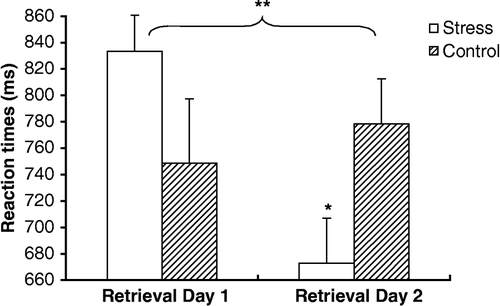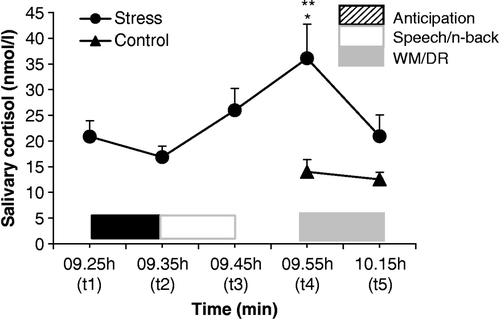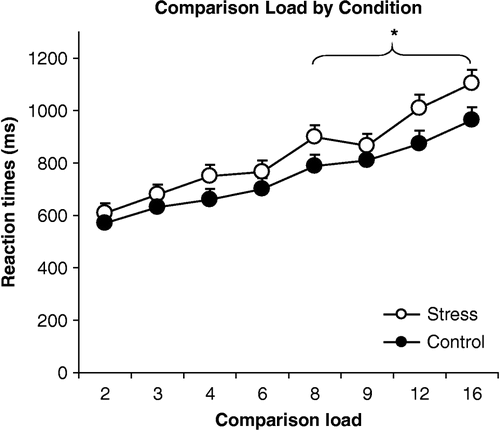Figures & data
Figure 1 RTs mean (and SEM) of the groups in the WM task on two consecutive days. Stress on the first day significantly weakened the carry-over effect that was visible on the second day. The group that had stress on the first retrieval day was control group on the second retrieval day, and vice versa. * Faster WM performance in the stress group compared to the control group, p < 0.05. ** Significant interaction of Condition by Order, p < 0.005.

Figure 2 Salivary cortisol concentrations (means and SEM) in the stress group at five time points (t1–t5) anticipating and responding to the TSST. Salivary cortisol levels of the control (no stress) group at two time points (t4, t5), when cognitive testing was done, are shown for comparison. * Significant difference between cortisol levels at t4 and t1 in the stress group, p < 0.05. ** Significant difference between stress- and control group at t4, p < 0.05.

Table I. Blood pressure and HR before, during and after psychosocial stress (n=10).
Figure 3 RTs (mean and SEM) of the two groups (stress and control, n = 19) in the WM task as a function of comparison load. At high comparison loads the stress group was significantly slower than the control group. Notice that the RTs at comparison load 9 are faster, similar to the data of Lupien et al. (Citation1999), which is probably because load 9 has fewer events, compared to other loads. * p < 0.05 (one-tailed).

Figure 4 The association between the proportion correct recall of the moderately emotional paragraph and cortisol level at the time of testing. Higher cortisol levels were associated with less recall. In the stress group (n = 9), salivary cortisol concentration explained 69% of the variance in moderately emotional declarative memory recall (entire sample: R2 = 43.5%).
